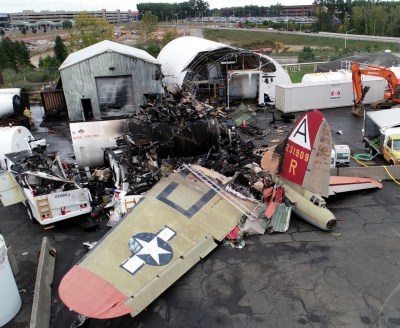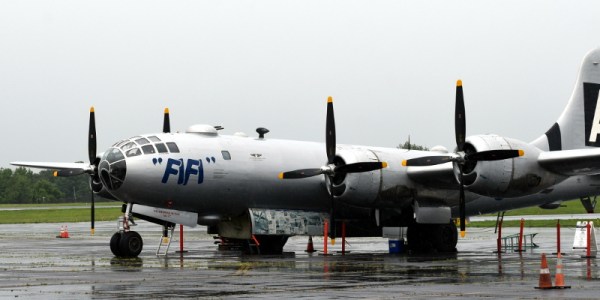Back in September of 2019, I had the opportunity to climb aboard the restored B-17G bomber Nine-O-Nine as part of a national “Wings of Freedom” airport tour operated by the Collings Foundation. I was excited to get up close and personal with such an iconic aircraft, particularity since Hackaday gave me a platform to share the experience with a global audience. With fewer than 50 B-17s left in the world, and most of those in the United States, taking this sort of “virtual tour” was as close as most people would ever get to seeing what it was really like for the crews who operated these machines over the skies of Europe more than 75 years ago.
Tragically, just a week after the article was published, the Nine-O-Nine crashed during a visit to Bradley International Airport in Connecticut. The pilot, co-pilot, and five paying passengers were all killed in either the initial impact or the subsequent fire. When crews were finally able to extinguish the flames, the left wing and tail were all that remained of the once mighty bomber. In a twist of fate, some of the images I took for the Hackaday article ended up being included in the National Transportation Safety Board (NTSB) accident report, as they represented perhaps the most detailed photographic record of the aircraft’s condition before the crash.

In the weeks and months that followed, many voiced their concerns over what the Federal Aviation Administration (FAA) calls “Living History Flight Experience” aircraft such as those operated by the Collings Foundation. The main point of contention was whether or not these planes were too old to safely carry passengers, and by extension, whether continuing to fly them around the country presented a menace to the national airspace. Critics argued that whatever cultural benefit offered by the chance for the public to tour or ride these antique aircraft was not worth anyone losing their lives over; a line of logic that’s difficult to find fault in.
Then came COVID-19. By March of 2020, individual states had already started going into lockdown, and suddenly there were far more pressing matters to address than the fate of a few dozen teetering WWII aircraft. It was around this time that the FAA pulled the Collings Foundation’s license to conduct any more paid flights, but since outdoor gatherings such as airshows were being put on hold for the foreseeable future, the measure had little immediate impact. It was clear these airborne museum pieces were going to spend most of 2020 in their hangers anyway.
Now, thankfully, the pall of COVID-19 is finally beginning to lift over the United States. In response to widespread vaccine availability, most states are ending or at least reducing their restrictions on outdoor events. With major airshows like the “World War II Weekend” in Reading, Pennsylvania given the green light to proceed, these legendary aircraft are being awakened from their long slumber and making their first tentative flights of the post-pandemic era.
Continue reading “Despite Uncertainty, WWII Warbirds Resume Tours”












